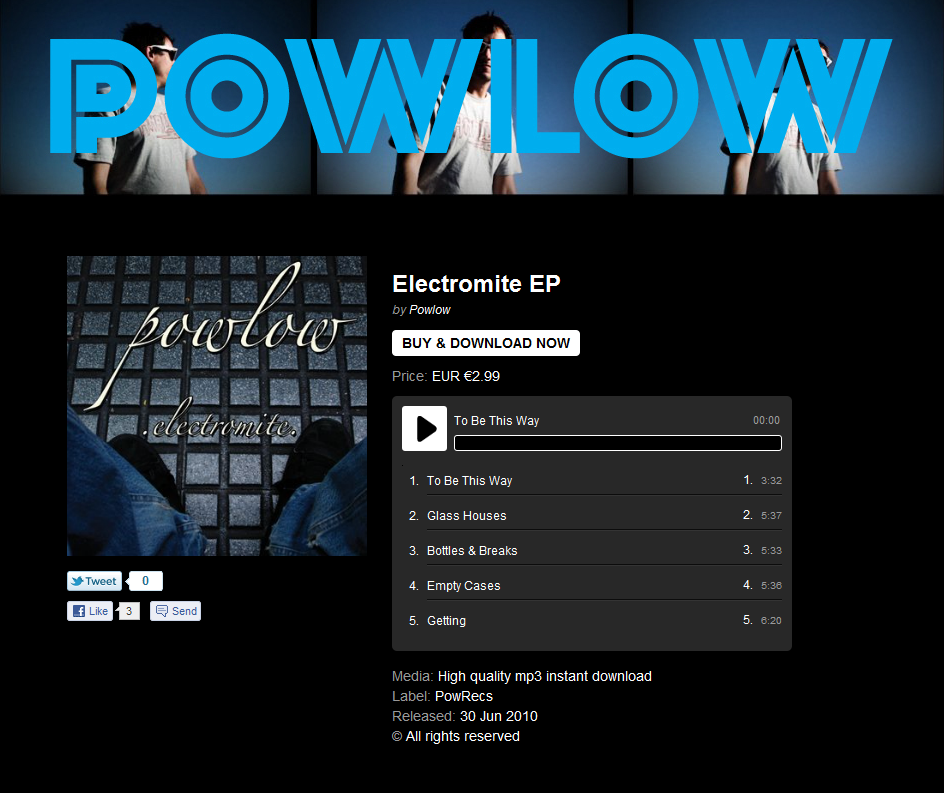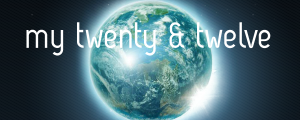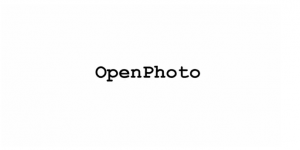The music market is, from all the art industries, the one which has probably suffered more changes and (forced) evolutions in the distribution and PR models over the last decade. Bleeding labels, piracy issues, market monopoles, streaming services that offer small change in return… And since the appearance of My_____ (for those who still remember) a desperate run for traditional retail or mass media channels adaptation.
“Direct-to-fan” platforms are one of those marketing tools that have “recently” joined the ever-growing list of digital solutions & alternatives that appear on a daily basis. You could think of them as your local food market with a similar (though not entirely) distribution approach where you establish a personal relationship with the stalholder, who in the best of cases is the farmer or grower himself. No retailer intervention, more €€ for the producer, theoretically cheaper for you.
When you buy a 10$ album today via iTunes, the artist gets a bit more than 6$, and when you listen to it via Spotify a band gets $0.00077601 per streamed track… so they basically need something like 10K plays to equal that of the digital album sale. You can imagine where the rest of the money goes to, right?
The “Direct-to-fan” websites will try to eliminate these intermediaries by providing artists a much bolder and more visible digital stall so they can maximize their profits without needing to sell through eTunes & Bmazons (although most of them offer both possibilities).
The list of direct-to-fan platforms on the market is, well… infinite, just like pledging platforms D2F has exploded over the past couple of years and they now aim, cover and assists artists (professionals too) on pretty much every-single-step-you-can-imagine of the go-to-market process.
Get me a customizable player, give me a personal website, manufacture my CDs or DVDs, manage my gigs, generate some tokens and spam my fans with e-mails, messages and “exclusives”, integrate my FB, Twitter and the rest of the socialverse. Prepaid, postpaid, merchandise, funding… ANTYHING is possible.
And the list of sites with some D2F flavor is just as long as the offered features … Nimbit, Tunecore, FanBridge, ReverbNation, Topspin, Audiolife, D2Mondo, Sonicbids, Zazzle, Bandzoogle, BandCentral…. aggggggggggg. We could even say that for each music producer out there, there’s a D2F platform (people like Ministry of Sound’s Rudy Tambala, Marillion, Nine Inch Nails, Radiohead… everyone is experimenting with D2F).
Some of them offer too much, others like Bandcamp or Vibedeck focus on what matters to 90% of the artists: put my stuff on-line and give me the money, the rest, is for geeks.
Lior Shamir & the team behind BandCentral have decided to simplify and cut down the D2F business model to the bare minimum by offering the most basic features…. for free.
aqnb: Hi Lior! Is free appealing enough to survive in the D2F ecosystem?
LS: No, it’s not enough and relatively easy to do. I think we’ll win [or lose] by virtue of our product experience, its usefulness and accessibility. “Free” does make VibeDeck more accessible and compelling though, and therefore aligns with our vision: “Simplify Ecommerce.”

about Vibedeck…
aqnb: How long until you introduce paying alternatives?
LS: We’re testing a variety of ideas now. I expect a concrete iteration tied to a revenue model in six months or so. However, I imagine that 95% of our community will never pay us a dime. We’ll need to be super-smart about super-serving the remaining 5%
aqnb: We’ve noticed Vibedeck’s team is the same behind Bandcentral. Why splitting services?
LS: Simply because we determined that it would be faster to build from scratch rather than on top of an existing framework. BandCentral consists of two years of code. We intend to dip into that for VibeDeck.
aqnb: Will they come together at some point?
LS: VibeDeck and BandCentral serve the same audience but with completely different products. We saw an opportunity in e-commerce (VibeDeck) that we didn’t see with productivity software (BandCentral). Based on VibeDeck’s performance to date, I believe that we were right to ‘pivot’.
aqnb: We’ve also read you’ve suggested a “VibeDeck expansion beyond music”… which other markets are you looking at?
LS: At the moment, VibeDeck facilitates the dissemination of digital goods only. As such, professional and recreational digital media such as ebooks, games, audio and video is interesting to us.
I should clarify that, when we started, we didn’t look at the industry as much as we looked at the product category. Specifically, we were thinking about web publishing, shopping carts, payment gateways etc. before music, film, books etc. We planted the seed in music because we know the business, it’s experiencing a painful evolution and it’s interesting.

about the industry…
aqnb: Can D2F make sense in a market largely dominated by digital stores such as Amazon or iTunes?
LS: iTunes owns approximately 75% of the digital recorded music market which is approximately 25% of the total recorded music market worth $26 billion. The market is not big, yet very crowded. In my mind, “direct-to-fan” makes sense: As an artist already selling on iTunes and Amazon, the ability to sell directly to fans seeking a heightened experience, exclusive offers, discounts, personal attention etc. is a valuable alternative, if only it were easy and cost-effective to do. There are lots of services that already provide a solution for this by way of embeddable widgets on the artist’s site, Facebook music store applications and hosted web publishing solutions. However, they are not as easy and flexible as one might expect. The “easy” part of this equation is where we come in. And we make it 200% free: It’s 100% free to use and the user keeps 100% of sales.
aqnb: A great question we got from spacelab.tv, with all the recent Internet companies IPOs (Pandora, Linkedin…) there are rumors about a new dot.com bubble. Regarding your market… are we in a direct-to-fan services bubble?
LS: I wouldn’t describe it as a bubble but there’s certainly a lot of hype around it. And rightly so. The economics for the typical music act (typical = making just enough to live or less) does not make financial sense. I estimate that a signed act is making $0.05 to $0.10 on the dollar from record sales (split between X band members and a manager). An independent act might make $0.60 on the dollar after distribution fees and iTunes’ cut. A VibeDeck user is making roughly $0.97 on the dollar after PayPal fees. In all instances, I’m not taking into account the fixed cost of goods (producing a record is expensive). I propose that, with VibeDeck, the user does not need to shift many units to generate meaningful revenue or carry the burden of a subscription which may not payoff.
aqnb: Are you afraid that big companies will just integrate D2F tools as part of their social media strategy (Direct 2 Consumer strategy)? Could this contaminate the whole D2F ideal?
LS: No, I welcome it. Again, we’re trying to solve a problem. If “big companies” acknowledge the problem and attempt to solve it, it further justifies VibeDeck’s existence.
about yourself…
You’ve worked & directed with other similar on-line music projects (the now defunct Mydrift, Audiolife)…
LS: So many startups, so many failures… 😉
I don’t consider Audiolife a competitor and Brandon Hance, it’s CEO, and I keep in constant contact to date. He’s been very supportive of VibeDeck.
I would summarize the last seven years or so as entrepreneur working with one part music, one part technology. With regard to music, I studied at Berklee College of Music. With regard to technology, TV/IP, e-commerce, e-contests, affiliate marketing.

aqnb: And when did you wake up and decide to go for your own music publishing platform?
LS: It wasn’t an “A-HA” moment. VibeDeck is the result of weeks of brainstorming with Wil, Co-Founder/CTO. Wil designed VibeDeck and Graeme, Felix, and Jimmi built it. If you ask me, those four guys built VibeDeck into the hottest artist-facing app I have ever seen. I have worked with many teams — this one is special. My position as CEO is to simply stay out of their way.
one last question….
aqnb: Most start-ups have had to reformulate their original business model sooner or later, especially those who’ve entered the market with a “free” promise. You’re proposing a nearly-utopian service, for how long will your current vision of VD survive?
LS: We believe that e-commerce is a bitch, not just for musicians. If we’re wrong, the business model is irrelevant. If we’re right and we’re the right team to make it easier and more rewarding, I believe our users will embrace a reasonable revenue layer. Like most startups, we have all kinds of plans and projections that we’ve long forgotten about… we’re focused on building and deploying quickly, and observing what sticks.
aqnb: Thanks Lior
(because our hyperlinks are not always visible to the naked eye…. http://vibedeck.com/)

















